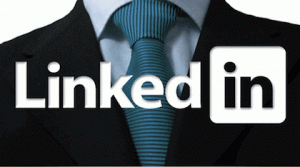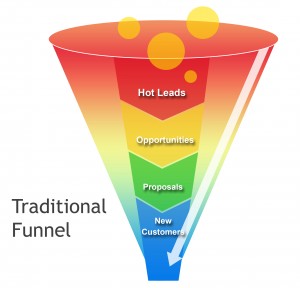 LinkedIn is a great resource for connecting with influencers and potential backers. Still, a lot of people don’t have a profile or don’t understand how it can figure into their social media promotion strategy. Whether it is interest-centric groups, surveys, InMails, introductions, or lead generation, LinkedIn is an invaluable tool for crowdfunding and business success. I’ve included a few tips below to demonstrate how you can use LinkedIn to garner support for your idea, project, or business. You can also check out some crowdfunding LinkedIn groups here that might be useful for connecting with influencers. Before executing on any of these tips, be sure that your LinkedIn profile has a current professional photograph, a descriptive work history (including skills and education), and that you have a made a few connections from your gmail, yahoo, or hotmail, or by using the “people you may know” tool. These above steps serve to confirm your identity or legitimacy and make it more likely that people will repsond to your messages or engage in a discussion you create. Requesting LinkedIn recommendations are also a great way to show the world that you have a strong worth ethic and have successfully worked with people in the past. That being said, here are 5 tips for promoting your Kickstarter campaign.
LinkedIn is a great resource for connecting with influencers and potential backers. Still, a lot of people don’t have a profile or don’t understand how it can figure into their social media promotion strategy. Whether it is interest-centric groups, surveys, InMails, introductions, or lead generation, LinkedIn is an invaluable tool for crowdfunding and business success. I’ve included a few tips below to demonstrate how you can use LinkedIn to garner support for your idea, project, or business. You can also check out some crowdfunding LinkedIn groups here that might be useful for connecting with influencers. Before executing on any of these tips, be sure that your LinkedIn profile has a current professional photograph, a descriptive work history (including skills and education), and that you have a made a few connections from your gmail, yahoo, or hotmail, or by using the “people you may know” tool. These above steps serve to confirm your identity or legitimacy and make it more likely that people will repsond to your messages or engage in a discussion you create. Requesting LinkedIn recommendations are also a great way to show the world that you have a strong worth ethic and have successfully worked with people in the past. That being said, here are 5 tips for promoting your Kickstarter campaign.
1. LinkedIn Advanced Search
By using LinkedIn Advanced search, you can find influencers or potential backers via keywords, their location, industry, interests, and seniority level. To access some of the more valuable search items, like the groups a person is involved in, or their years of experience, you may need to purchase a premium account. Either way, this capability is powerful for lead generation. For example, if you were running an education-based crowdfunding campaign and wanted to connect with bloggers, entrepreneurs, teachers, or professionals in this industry, you could use advanced search to concentrate on individuals in your area, working at a particular education nonprofit, who in the past went to your alma mater. The list of individuals who fell in the search criteria would serve as potential leads. They may be willing to connect you with the education nonprofit for a partnership, forward the campaign to their friends in the education industry, or be willing to support it themselves because you are from their alma mater and looking to do good in the local community. You can also use the 1st, 2nd, and 3rd degree connection tool to identify professionals who are connected to you in some way. For example, for a gaming industry Kickstarter product, if you were looking to connect with people who blog about gaming, by using advanced search you could see if you had a 2nd degree connection to any bloggers via one of your first degree connections (friends, professional connections, past employers, etc). If you did have a connection to that gaming industry blogger, you could ask for an introduction and you would have the opportunity to pitch your campaign and maybe get a mention or a feature story. Another option in the relationship filter tool is to specify LinkedIn group members that fit your search criteria. This is extremely powerful because a member interested in the same industry as your Kickstarter campaign or who is in the same LinkedIn group may be more willing to help out than a random individual. LinkedIn is all about helping you generate warm leads, or lists of individuals who share some kind of common connection or interest with you.
2. Profile View and Analysis
When you are researching professionals, bloggers, or journalists that you might be asking to support your campaign in some way, be sure to pay special attention to their previous work experience and skills. When I was the head of business development for my previous company in the recruitment software industry, I remember this one time when I was looking through this person’s profile I had just met at a charity networking event. We only had the chance to talk very briefly, but we seemed to develop great rapport. The conversation was largely informal and after a long day at work, I didn’t think to mention what I did or the kind of software my company provided. From his card, I saw that he was involved in the film industry. I didn’t think anything of it until I got back to my computer and had a chance to look through his LinkedIn profile. Sure enough, he had past experience as a recruiter, had made a career change, and was now pursuing his passion in film. A few phone calls and meetings later, and we ended up landing a client as a result of an introduction to one of his previous employers. Lessons Learned: Always check out past experience and interests. Also, don’t be afraid to reach out!
3. Introductions, InMails and Interest Groups
As I described in my previous article, all promotion follows the sales funnel model. Of all the communications you take, only a small percentage will reach and resonate with the intended audience, and a smaller percenage will lead to your call-to-action. This action could include: backing your campaign, writing about it, tweeting about it, or sharing it with their friends. I’ve included a diagram below.
Asking for introductions, posting in LinkedIn groups, commenting on discussions, sending InMails, and sending messages to your existing network comprise the highest level of communication you can make. Not all introductions will work out and not all InMails will be answered. The more important thing is that a large volume of quality action takes place, as this is what yields desired conversions or results. Check out this post for more information on LinkedIn groups or this post for tips on wording emails.
4. Updates and Expanding Your Network
In the same way that facebook or twitter helps you reach an audience of followers and friends, LinkedIn updates can help you market your Kickstarter or Indiegogo campaign to your professional connections. By promoting specific reward tiers, you can let your network know about the different ways they can support your campaign from “liking” or sharing, to pledging at lower, middle, or upper tiers. I’d recommend constantly working to expand your professional network, whether it is inviting people to connect with you on LinkedIn through email, looking through “people you may know” once a day, or exchanging business cards that have a link to your campaign or website at networking events.

